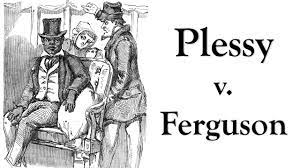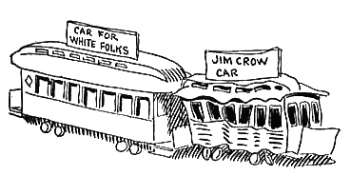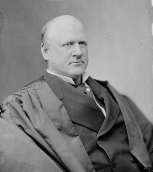
Plessy v. Ferguson (1896) was a historic point sacred law instance of the US Supreme Court. It maintained state racial segregation laws for open offices under the tenet of “Separate but equal”. “Separate but equal” stayed standard teaching in U.S. law until its disavowal in the 1954 Supreme Court choice Brown v. Board of Education. After the Supreme Court administering, the New Orleans Committee of Citizens, which had brought the suit and had orchestrated Homer Plessy’s capture in the act of crime to test Louisiana’s segregation law, expressed, “We, as freemen, still believe that we were correct and our cause is sacred.” The choice was passed on by a vote of 7 to 1 with the dominant part feeling composed by Justice Henry Billings Brown and the dissent composed by Justice John Marshall Harlan.
In summary of the Opinion of the Court, Justice Brown proclaimed, “We consider the underlying fallacy of the plaintiff’s argument to consist in the assumption that the enforced separation of the two races stamps the colored race with a badge of inferiority. If this be so, it is not because of anything found in the act, but solely because the colored race chooses to put that construction upon it.” Justice Brown additionally referred to a Boston case maintaining segregation based schools. While the Court did not discover a distinction in quality between the whites-just and blacks-just railroad trains, this was plainly untrue because most other separate offices, for example, open toilets, bistros, and government funded schools, where the offices assigned for blacks were reliably of lesser quality than those for whites.
Justice John Marshall Harlan disagreed from the larger part sentiment. In an assessment that later got to be distinctly vital in the Brown v. Board of Education cases (1954), he contended that segregationist enactment, like the Louisiana law for this situation, depended on the presumption that “colored residents are so second-class and debased that they can’t be permitted to sit in public coaches involved by white individuals.” These laws advanced and sustained the conviction that African Americans were mediocre compared to whites, as per Justice Harlan. They should be struck down, he contended, since the legislature proved unable “allow the seeds of race hate to be planted under the authority of the law.” Justice Harlan trusted that the constitution must be “colorblind,” and that it could permit “no superior, overwhelming decision class of citizens.” Because segregation had the impact of making such classes, he judged, it was unlawful.
Plessy addressed the state laws setting up racial segregation in the South and gave a driving force to further segregation laws. It additionally addresses laws in the North requiring racial segregation as in the Boston school segregation case noted by Justice Brown as he would see it. Administrative achievements won amid the Reconstruction Era were eradicated through methods for the “separate but equal” teaching. The regulation had been fortified likewise by a 1875 Supreme Court choice that restricted the central government’s capacity to mediate in state undertakings, ensuring to Congress just the power “to control states from demonstrations of racial separation and segregation”. The decision essentially allowed states administrative resistance when managing inquiries of race, ensuring the states’ entitlement to execute racially isolate foundations, requiring them just to be “equal”. I believe this was the correct choice made by the Supreme Court, since this case prompted Martin Luther King Jr’s. development for equality, unity, safety and well-being for all individuals in the United States, and Brown v. Leading group of instruction, permitting colored and white students to reside in the same schools.
Railroad car for whites’ vs colored:

Justice Harlan “The Great Dissenter”:

Sources used:
http://landmarkcases.org/en/Page/436/Summary_of_the_Decision
http://sageamericanhistory.net/reconstruction/documents/Harlan.htm
https://en.wikipedia.org/wiki/Brown_v._Board_of_Education
http://www.history.com/this-day-in-history/supreme-court-rules-in-plessy-v-ferguson
https://en.wikipedia.org/wiki/Plessy_v._Ferguson









